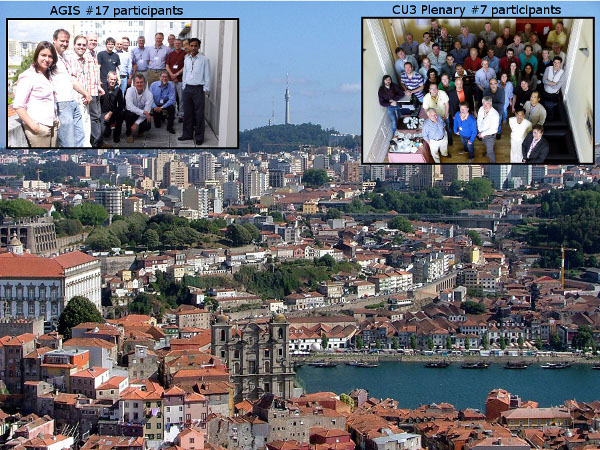|
Last month, a very special place on this planet saw two consecutive Gaia meetings, namely the AGIS meeting and the CU3 plenary meeting. Upon an invitation of CU3 members at the universities of Porto and Lisbon, both were held at the city of Gaia in Portugal. The complete name of the town is Vila Nova de Gaia, but everyone only calls it Gaia. It is an independent municipality of about 200 000 inhabitants across the river opposite to Porto.
As you can imagine, all meeting participants enjoyed the entertaining factor of walking through the streets and seeing Gaia signs everywhere, on hotels, bars, restaurants, pharmacies, buses and taxis. Daniel Michalik reported the following anecdote from a taxi ride back from dinner to the hotel, during which Francois Mignard was busy taking pictures of Gaia signs, especially of the one on the taxi in front of us.
It so happened that the taxi driver felt our obsession for the name of Gaia, and eventually he turned around to ask us in English "Do you know what Gaia really is?". We were quite curious about the answer, expecting anything from a Greek goddess to a freaky modern religion. With his happiest smile the driver said "It is the town on the other side of the river".
Needless to say, we were quite amused. After some laughter we figured it might be nice to tell him that there is also "this European astronomy satellite that we are working on", which happens to be named Gaia, and that we chose the meeting location due to its name. The taxi driver nodded understandingly. After a moment of silence he again turned around and asked: "But why would anyone want to name a satellite after our town?" ...
Picture of Vila Nova de Gaia seen from Porto by Jonik (Wikipedia).
[Published: 23/07/2012]
|








































 Sign in
Sign in
 Science & Technology
Science & Technology

